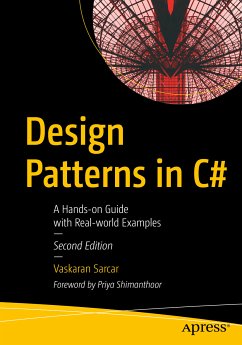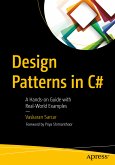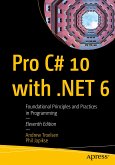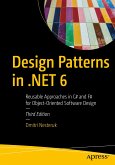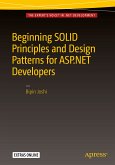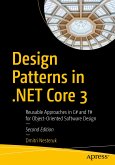Get hands-on experience with each Gang of Four (GoF) design pattern using C#. For each of the patterns, you will see at least one real-world scenario, a coding example, and a complete implementation including output. In addition to GoF patterns, you will learn additional design patterns which are common and equally important.
In this second edition, you will go through the design patterns and their implementation in Visual Studio 2019 and C# 8. Common patterns in asynchronous programming are covered, including the TAP pattern and APM pattern. You will learn via easy-to-follow examples and understand the concepts in depth. With these updated patterns, you will have a collection of programs to port over to your own projects.
The book begins with the 23 GoF design patterns, and then moves onto alternative design patterns, including the Simple Factory, Null Object, and MVC patterns plus various patterns in asynchronous programming. The book concludes with a discussion of the criticisms of design patterns and chapters on anti-patterns.
Each chapter includes a Q&A session that clears up any doubts and covers the pros and cons of each pattern. FAQs will help you consolidate your knowledge.
You will:
- Work with each of the design patterns
- Implement the design patterns in real-world applications
- Select an alternative to these patterns by comparing their pros and cons
- Use Visual Studio Community Edition 2019 to write code and generate output
Dieser Download kann aus rechtlichen Gründen nur mit Rechnungsadresse in A, B, BG, CY, CZ, D, DK, EW, E, FIN, F, GR, HR, H, IRL, I, LT, L, LR, M, NL, PL, P, R, S, SLO, SK ausgeliefert werden.
Es gelten unsere Allgemeinen Geschäftsbedingungen: www.buecher.de/agb
Impressum
www.buecher.de ist ein Internetauftritt der buecher.de internetstores GmbH
Geschäftsführung: Monica Sawhney | Roland Kölbl | Günter Hilger
Sitz der Gesellschaft: Batheyer Straße 115 - 117, 58099 Hagen
Postanschrift: Bürgermeister-Wegele-Str. 12, 86167 Augsburg
Amtsgericht Hagen HRB 13257
Steuernummer: 321/5800/1497
USt-IdNr: DE450055826
Bitte wählen Sie Ihr Anliegen aus.
Rechnungen
Retourenschein anfordern
Bestellstatus
Storno

